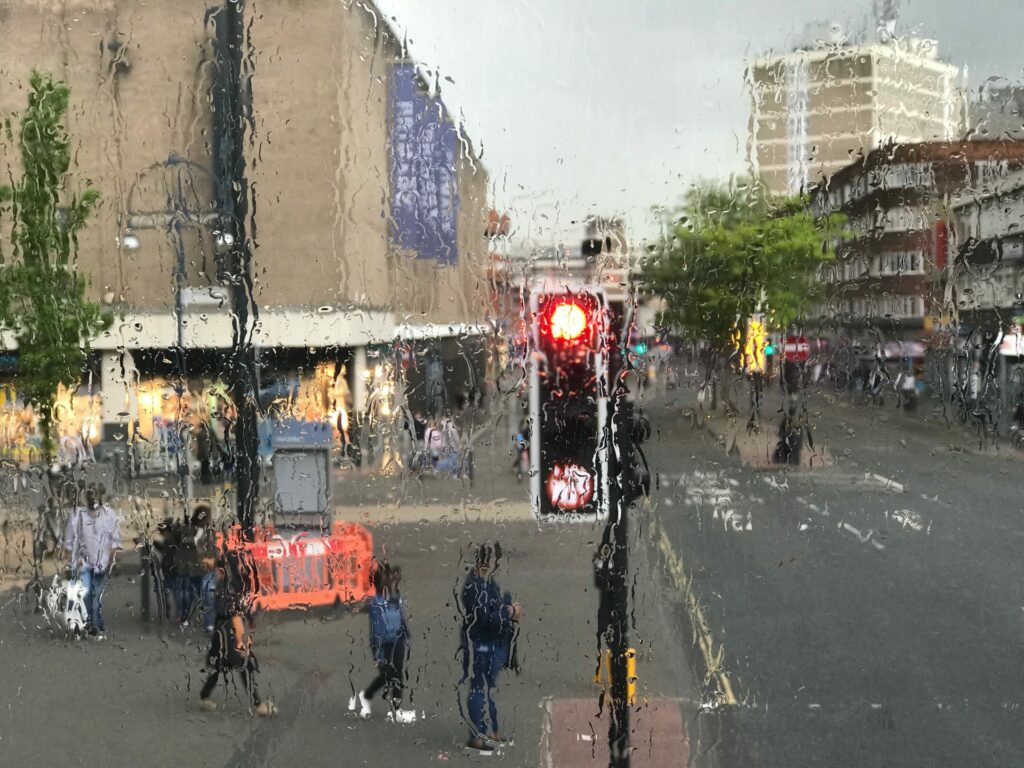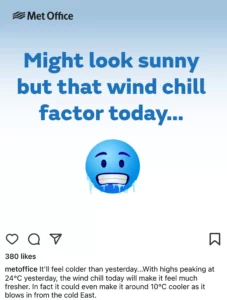Helping users to understand the weather forecast for The Met Office

Across the UK, every day, people make decisions based on the weather. The Met Office provides weather forecasts to help with those decisions so people can be safe, well and prosperous.
To deliver this mission, it’s essential users can understand and interpret weather forecast content, as public understanding leads to increased perceptions of accuracy, trust and a better chance of informed public behaviours.
This project considered social media content in particular, while having awareness of ongoing work to improve the website and app.
To approach the challenge, Claremont joined forces with long-term design and digital partner, William Joseph – Claremont led the project and brought expertise in qualitative insight and behavioural theory and William Joseph their experience of content audits and user testing.
We began by looking at existing Met Office insight through the lens of behavioural science using the MINDSPACE tool. Informed by this understanding, we focussed our attention on four Met Office segments: people who work outdoors, leisure users (both pre-planned and flexible) and people who make daily decisions.
We conducted online focus groups with leisure users and outdoor workers using the Fogg Behaviour Model, B-MAP, to help us understand user behaviour in terms of motivation, ability and prompts. We also discussed perceptions of accuracy. Alongside this we conducted a diary study, tested content and delivered an accessibility audit.
Among findings, we discovered:
- The importance of day-to-day language to describe the weather.
- Visual cues demonstrate unusualness of weather.
- There is more confidence in the forecast if the chance of rain is high or low.
- The importance of unusualness of weather to outdoor workers.
- The importance of conditions other than rain to outdoor workers.
- Concise, easy to understand information increases trust by reducing overload.
- Content needs to be interesting enough to catch attention.
- Speaking to people’s experiences makes content relatable and useful.
- People look to the Met Office to counter clickbait and misinformation.
Informed by this, and in partnership with the Met Office team, we developed hypotheses for improving communication then mock-up creative for testing in relation to each of these.
Together, we successfully created content that was received as being well explained, helpful for decision making and providing confidence in accuracy.
Example mock ups and feedback:

- 84% of leisure users found this well explained.
- 82% of leisure users found this helpful for decision making.
- 74% of leisure users found this gave them confidence in forecast accuracy.
“Not the typical weather forecast presentation but very clear and easy to understand” — Leisure participant

- 92% of outdoor workers users found this well explained.
- 80% of outdoor workers found this helpful for decision making.
- 82% of outdoor workers found this gave them confidence in forecast accuracy.
“Knowing the heaviness of the predicted rain allows me to decide what work can be carried out on a given day. The area covered also allows me to plan ahead on jobs, allowing me to shift things around to better suit what I can do to help clients.” — Outdoor worker
The full results of this work provide the Met Office with the evidence they need to be bold with their social media content, carry on testing, use everyday language and keep things simple – and in turn increase perceptions of accuracy, reach and engagement in social media content so the UK public can stay safe and thrive.
“A huge thank you to Claremont and William Joseph for their advice, expertise and all their hard work.”
— Rachel Murphy, Lead Marketing Manager, The Met Office